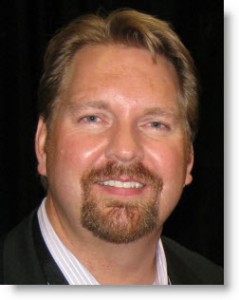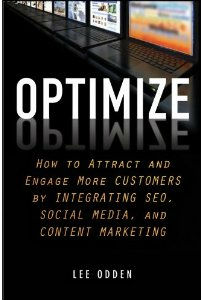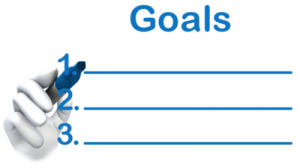
Jon here with another addition of the” Executive Interview Series” where we interview and talk to some of the best of the best, the finest of the finest, in the online marketing space. Today, we have Mr. Lee Odden.
He is the author of (new book) Optimize: “How to attract and engage more customers by integrating SEO, social media and content marketing”.
He’s also the CEO of Top Rank Online Marketing, which is a Minneapolis based digital marketing agency that helps Fortune 1000 companies grow brand visibility and sales online. Lee has 15 years of veteran internet marketing experience and he’s been cited by the Wall Street Journal, New York Times, Forbes and the Economist for his online marketing and PR expertise. He also publishes one of the most popular marketing blogs – toprankblog.com on the web. And Mr. Odden serves on the advisory board for Incisive media’s SES conferences and speaks internationally on the topics of integrated PR, search, social media and content marketing. I’m excited as can be here today! He’s hard to track down but we finally got this together … and let’s dig in.
We are live here with Mr. Lee Odden. Lee, I have a few questions for you here today. We are going to touch on your exciting projects and your book, but first of all I would like to get to understand a little bit about your background and how you got to where you are now.
What drives you on a daily basis? What fires you up?
(Audio interview):
(What are the personal drivers?)
It’s great to be here today Jon and those are some big questions. Getting right to it is a good thing. I got into this business after switching careers. I started working with a company that made websites for vertical markets and I started teaching myself some development, so I could sell more expensive websites. People who bought these websites, and this was in 1997-98, started asking “How are we going to get traffic to this website you sold us?” That’s when I started learning about SEO. In the course of doing that, got into more web development and other things related to internet marketing. In 2001 a friend of mine started a public relations firm and hired me to optimize their site. That worked well. They started including SEO in with public relations pitches. So companies that would be pitched on “We can get journalists to write about you and we can optimize that content, so it can be found through search as well.” This was a very unique thing in 2001. That company eventually hired me as a contractor then an employee, and then I became a partner and then the CEO after a few years. We became more of a digital marketing agency.
The other part of your question was about what drives me. I am highly motivated by my family, but I also motivated by this opportunity to work in an industry where I get to do what I love. I am constantly learning. I get to have hypothesis about things and have platforms to test them out on, get data and leverage that data. Then give recommendations to our clients and repeat it all over again. There are a lot of really smart and creative people in the internet marketing space and I really enjoy working with those sorts of people. I also find it interesting how the internet brings together so many different communities and so many different interests amongst common platforms. Whether it’s through social channels, email or whatever. It’s very interesting to me as well, it’s very much driving force in terms of doing what I get to do.
Jon:
You mentioned family, and that’s a big deal as at the end of the day it’s all about that. I recognize and understand that well. I appreciate your comments. Tying into that, you mentioned what drives you and how you get to work with very smart people in this industry at a very fast pace too, I’m sure! Can you take it from there and drill it down even further? You have a very successful business, Top Rank Marketing, you have the amuse blog but you also have a personal brand as a speaker. Sort of this brand personality, almost an online advisor. I know you speak and travel a lot and your new book is just out. So much is going on is it possible to drill it down even further to your core focus? Is it educating small businesses around social media? Is it SEO? Is it education using your speaking engagements? Looking at that and tying it into a three, four, five year looking forward. What do you see for yourself in all of this? I’m still sort of on the personal side of this to leverage my next few questions.
Lee:
(What technology and tight budgets did for success…)
I got into this business just out of an interest in technology. I’ve always had that. My field of study was sociology and anthropology in college. Right now is amazing as a time to be in those fields and to have had those educational interests years and years ago. Now being able to act on those in a very significant way is very exciting to me. When this business, TopRank started, the dot com busted and our focus was on technology companies and a lot of technology companies were hurt significantly by the economic crash back then and weren’t spending money on marketing dollars. So we had to get really creative. SEO is very effective, as you already know, because people are actively looking, so that should be a no brainer for any company. Other things that came to mind in customer acquisition that came to mind were what kind of content can we create? I can only go to so many locale networking events but the internet is vast. What could I do with content to get the word out in a more effective way besides just web pages on our website about products and services? So I learned about blogging and started experimenting with that. This journey that I have been on, as sort of an answer to your question, and becoming the mouth piece for our company and getting some notoriety in the industry at large really just began with a desire to shorten sales cycles, increase my ability as one individual to achieve significant reach, and to help create a scenario where if I could provide enough relevant information and create multiple signals of credibility that I could encourage a steady influx of leads and project inquires without spending on any money on advertising or on sales people… that was my objective. I started speaking to get a way to go to conference for free. Live blogging was conferencing too, so that created content. I was not a natural speaker; I was shy at that time. It was really a big leap for me to speak in front of more than a couple of people. Today it doesn’t matter to me, it’s okay. That journey was one of creating information that would be useful to people, designed to get them to talk about it and share. Tell it to friends and to create that positive buzz, that paying it forward, or give to get if you will. Demonstrating expertise, thought leadership — clearly as a way to shorten those sales cycles. So when projects came our way, people call up and say “Read a couple of your articles, been reading your blog for a couple of years or a couple months, I talked to a couple of customers from your customer page and we have a project and want to know if you would like to work with us.” That is the way it has been for about 11 years.
Jon:
That’s very powerful. It’s like this notion of eating your own dog food, you share and care in a big way in the community and it comes back 100-fold.
Lee:
(It helps to be creative)
It does. It takes an investment though. It’s kind of tough to see people literally taking what you have done and published and claiming it as their own. But that is going to happen. Doing things this way is not for people who are not creative, it’s not for people who don’t have longer term thinking. If you don’t come up with creative ideas on a regular basis, if you don’t have that brain power it’s kind of tough because people are going to take your ideas. It’s so easy these days, with all the sharing and content propagation and what not.
Jon:
(The blogging challenge)
You mentioned something interesting, sales and shortening sales cycles. In that there’s this idea that I have to push out content and you mentioned a blog; how the heck do I do that, I guess I could ask my webmaster or technical people, but the content and the development the scheduling, creation… This next question is really based more around blogging than shortening the sales cycle so I’m switching gears a little bit. In that blogging area, you’ve been very successful at that, you said central to this content marketing but what are the two or three things that you typically come up against again and again and if you think of those few things, what recommendations do you typically give thinking of those problem points?
Lee:
(How not to run out of ideas for blogging)
After blogging for eight years it does happen that you run out of ideas or inspiration. I think it would be naive of anyone to think they can blog for that long based purely on personal inspiration or what you know. Each person is a vessel; if you only talk about yourself you will run out, it’s just a matter of time. Despite that and acknowledging that and the counter to that, is to be tapped into the community. To actively engage on and off of your blog, and I liked your secret: “getting away from social media and networking off-line” and networking in the real world. It’s that on and off-line combination that’s the one-two punch, at least for us. The tapping into the never ending stream of ideas is really, really important. In my case, I do that by participation in conversations and networking with other people. In some cases it’s through our own blog comments, in other cases it’s commenting on or getting into discussions on forums and other industry blogs. It happens at events where I sit in on sessions and network with people. Especially, it’s when I meet with our team of account managers who are the individuals who manage the projects that we work on for our clients. They are on the ground working on a diverse array of digital marketing projects for small and large companies. They come up with different situations, successes and opportunities; we talk about it and get a number of different ideas from those conversations. Also, talking directly to customers about what their concerns are. If they have those concerns, chances are lots of other companies will have those concerns too. That from a topical standpoint is priceless when it comes to coming up with ideas for blogging.
(Let go and get help)
One of the other things that come up often is leveraging other people in the blogging effort. In my case, I’ve written over 1.2 million words over the last eight years and 2,350 blog posts. There are only 2,475 blog posts on our blog so I’ve written 99% it. Some other folks who work for my agency have written the rest. You can image it was kind of a big deal for me to let go. But I also welcome the help. I had to find a way to welcome that help and empower those other folks. Not just letting go, the other thing was accepting other people were going to have other (writing) styles. So if you’re in a situation in your company and you’re the one who’s been blogging and you really would appreciate help from other people that’s awesome – but it’s important to understand that they are not going to write exactly the way you do. You have to be open to their voice and helping them to develop their own voice. It may take a little time to do that, but it’s important. That diversity really helps with traffic, qualitative conversations.
Jon:
If I was to summarize, it’s networking not just on-line but off-line. It’s the community. And, also leadership / management & willingness to give up.
Lee:
Yes, as things grow you have to get out of the way yourself.
Jon:
 I like that, I appreciate that. By the way, I’m excited because I have a copy of your new book! It’s called Optimize from Wiley and Sons. It’s called How to Attract and Engage More Customers by Integrating SEO, Social Media and Content Marketing. It’s no short title but it works. What made you write that? What makes it different than others in the somewhat competitive SEO and social media book markets?
I like that, I appreciate that. By the way, I’m excited because I have a copy of your new book! It’s called Optimize from Wiley and Sons. It’s called How to Attract and Engage More Customers by Integrating SEO, Social Media and Content Marketing. It’s no short title but it works. What made you write that? What makes it different than others in the somewhat competitive SEO and social media book markets?
Why you wrote it? How it stands out and makes it a little bit different? And also, who’s that perfect target audience that would love to get this book?
Lee:
(Why writing a book works)
The reason I wrote the book was I was stalked by an acquisition editor. (Shannon, if you’re listening; Hello!) She followed me to London, San Francisco, and New York. That’s only half true; the stalking part is not true. I thought, why should I write a book? I got a blog that is ranked three times as the number one content marketing blog by Junta42 and Content marketing institute. It’s been ranked number two for social media by social media examiner and so on. We get lots of visitors; all my business needs from a digital marketing prospective as it relates to blogging are completely satisfied. I was really hesitant at first, but at the same time a lot of my friends and peers in the industry were writing books and I started quizzing them. I was quizzing guys like Mike Moran, Brian Eisenberg, and Jay Baer about the trials, tribulations and pain involved. The sacrifice involved. For reason I thought that’s a challenge I think I’m up for.
I really thought if I go through the process of writing a book that’s a journey in itself. I thought maybe I’d have an opportunity to be even smarter. There’s no way I couldn’t get smarter by going through the process of writing a book, organizing thoughts and structuring things in that sort of way. That is ultimately why I decided to do a book. At the same time, I didn’t feel that there was much out there talking about pure integration of search, social and content. Lots of SEO books, a growing number of social media books, and also a growing number of content marketing books… but there weren’t any books that took a purely holistic point of view on the integration of the three from the start. A lot of other books talk about SEO and if you create a lot my web pages you have a lot more to optimize so that’s more destinations for inbound links, ranking and search results. Social media talking about engagement and building community but not really talking about closing the deal or the role in social in the sales cycle, only in terms of building brand advocacy and retention. Because of the way we do our own marketing and how successful it’s been on very limited resources, I wanted to paint that picture in the form of a book.
Getting to what’s different about it; there are a couple of other books out there that are out there now, in fact there are a couple more coming out really soon that are in title talking about search, social and content marketing. They are either very SEO centric or they’re content marketing centric. Optimize, my book, basically takes a holistic view of content across an organization. Instead of just looking at marketing, optimizing products and services content and socializing to promote it for easy discovery, either through social or search channels — I’m talking about applying that idea to other kinds of content in an organization. Whether it’s public relations, customer service or recruiting; it’s more a holistic view of content as assets. The metaphor I like to play with in the scenario is a peanut butter and jelly sandwich; where the peanut butter is the SEO, jelly is the social media and the bread is the content that holds it all together. The book takes the reader through a bit of a journey, but it’s also a reference, so if someone’s brand new to the notion of modern digital marketing they can take this book and go through phase one and get all the planning, audits and prep work for building a strategy. They can then go through the second phase and go through all the steps:
- developing customer segments,
- keyword research,
- content plan,
- creation and curation,
- social network development,
- link building,
- analytics
… just the whole gambit. Also how they can take that new won information and scale it up in their organization by developing processes and identifying training opportunities.
That is someone who is new, but if someone already has a lot of experience in one of those areas, whether it’s a lot of knowledge about content strategy and marketing or a lot of experience in SEO or maybe they’re pretty savvy in the area of social — they can pop into particular areas on the book that will help them understand more about the things they don’t know about — but it will give it to them in a way that will leverage what they already know. I think it’s a very customer centric view, we’re optimizing for customer and business outcomes with Optimize not just keywords or social channels.
Jon:
That speaks to the idea of it being a mind set. Who would you consider a perfect target audience for it?
Lee:
(What target audience)
In chapter two I talk about some of the difference audiences that are applicable for this book. Rather than saying this is just for marketers, this book is good for marketing, someone in public relations, someone who wants to get more visibility for their news, more thought leadership and brand awareness. It’s also good for people who have a recruiting responsibility because you can optimize those job listings and do a much better job of attracting and keeping people. Same thing for customer service, creating and optimizing content that people who have already purchased your products or service will need. As well as other stages in a customer life cycle in terms of helping to retain customers and create advocates. B2B, B2C, big companies and small companies this book is relevant to any one of those situations because it does give examples for each one.
Jon:
Oh that’s brilliant. In fact, in the book, you talk about the A, B, C as I’ve broken it; A the planning, B the implementation or execution, and C the scale. Your right – I found myself flipping around the book a little bit and scaling is of great interest to me but they are three distinct parts they can work very well together and probably must work together. It’s probably also true that success can be found by leveraging all three but can you tell us a little bit about each? Sort of top level information that might not be so obvious, because when somebody’s listening they may say, “Planning, well I know that.” But maybe not in this manner. What’s the most important? And finally, in this A, B, C area – what do you find that most businesses have trouble with?
Lee:
(Phase 1 – the planning phase)
 As far as the planning phase, the first is really helping the reader understand what an optimized state of mind is. What the word optimize really means. In fact, I tell a story about it in the terms of a shift in relationship between customers and content.
As far as the planning phase, the first is really helping the reader understand what an optimized state of mind is. What the word optimize really means. In fact, I tell a story about it in the terms of a shift in relationship between customers and content.
What are our key opportunities with content marketing? Take a customer centered view and understand how consumers discover content, what are they searching on, what are they talking about on the social web, what are the preferences of consumer content – what kind of devices, what format of content, what types of media. What will inspire them to action or engage? Obviously a lot of folks want to make a sale out of their content or optimized marketing but you can also inspire people to share on a social web or literally make a word of mouth referral which is probably one of the most ideal ways to get a lead is when someone has made a personal recommendation. There’s lot of people who will never be your customer but they will appreciate the content you are publishing and they may refer you to others. Those can be some of the most valuable types of leads. The planning section talks about getting into that sort of state of mind and articulating a framework for that journey. Where does the optimize and socialize prospective fit within your company or industry?
Then it gets into doing research, auditing, setting up social media listening, some of the objective setting and some things you need to do to set a strategy that’s actually informed by data. So that really sets the stage for someone to get a heck of a lot more out of the implementation phase. I know the mistake a lot of people run into is they jump right into the implementation without doing any of the planning. That’s like buying a really great dart, I bought a $50 dart and threw it against the wall and it didn’t hit the bull’s eye. Well, you didn’t learn how to throw darts first!
(Phase Two – Implementation)
 Phase two really talks about the linier process, one of the points of the book is teaching you how to “steal traffic” from other people who are planning on a linier customer sales cycle. It’s a linier process in terms that it is iterative, it builds upon each stage. First stage talks about how to customer segmentation, how to identify who are your best customers, who are your worst customers and take some steps toward collecting the data to understand common characteristics among groups of customers and developing personas. Second, how to take that insight about who you’re trying to sell to or who you’re trying influence and do a more effect keyword search. What topics or keywords people might search or talk about on the social web.
Phase two really talks about the linier process, one of the points of the book is teaching you how to “steal traffic” from other people who are planning on a linier customer sales cycle. It’s a linier process in terms that it is iterative, it builds upon each stage. First stage talks about how to customer segmentation, how to identify who are your best customers, who are your worst customers and take some steps toward collecting the data to understand common characteristics among groups of customers and developing personas. Second, how to take that insight about who you’re trying to sell to or who you’re trying influence and do a more effect keyword search. What topics or keywords people might search or talk about on the social web.
Other parts of implementation we talked about before;
- developing an editorial plan,
- what are the rules of creation for new content (which is kind of expensive and hard to scale),
- curation & creation of existing (and new) content,
- optimizing (SEO copy writing and on page optimization)
- building a network (which is like building an army, you want to do that before you need the army not the day of a battle).
The importance of taking what you have created which is so relevant to a particular target audience and building into your process this notion of promotion. So there’s a little bit of online PR in here and then the notion of how do we track success? How do we monitor progress and how do we know when we’re successful? How can we take those insights about what’s working and what’s not and bring that back to our goal setting or our hypothesis in the first place and be adaptable in how we’re executing this sort of program. That’s all the “B”
(Phase 3 – Scaling)
 Now the C, there’s a lot in there and it talks about specific processes that you can incorporate and there’s some examples in there for all different types of companies and industries and also some resources and tactics for ramping up your skill sets in your organization through training. So that you can actually take some of the stuff you have learned in the book and extend it to other folks in your organization.
Now the C, there’s a lot in there and it talks about specific processes that you can incorporate and there’s some examples in there for all different types of companies and industries and also some resources and tactics for ramping up your skill sets in your organization through training. So that you can actually take some of the stuff you have learned in the book and extend it to other folks in your organization.
Jon:
As you look at all of this when you talk to so many different diverse businesses is it an equal sort of trouble spots for businesses in each of these areas? Or is it any one particular area that you feel they are stumbling on again and again?
Lee:
(Why small business is failing in social or content development)
It really depends on the business. I think one of the most common things I hear from the small companies is fear of failure or being embarrassed by investing in social or content and it not working out. They feel like they are going to run out, they won’t have the sustainability or the endurance. The solution to that is the one that I found for us, and that is incorporating social and community participation along with our mechanisms for sourcing ideas and sourcing content by actively engaging with communities and looking at data as well. Web analytics and social monitoring data; tapping into those data sources in combination with participating with the community will result in a never ending stream of really fantastic ideas. In fact, it will give you the insight to make your ideas and the things you write about even more productive in the terms of influencing business outcomes. That’s the commonality of small businesses.
(Why large companies are failing)
With large companies or more complex organizations other things come into play. We’re in marketing and we think we can get public relations on board because there are things they’re doing that can be really complimentary to marketing and it’s important that our customer has a common experience. If marketing has a blog and PR wants to their own blog, we kind of have to work together, but we have to get legal approval, and IT’s got to support us. There are some different issues there depending on the industry so processes tend to be more important in a complex organization. Accountability is very important and when you’re working with some many different people, even in different regions or countries, having some sort of management or governance over how these things are going to work together across departments and different individuals. Having a framework, especially if some of the framework within Optimize (the book) has been really helpful.
Jon:
Thanks great. That framework, policies and guidelines, the training and education we see that a lot as well. In fact, I have a meeting coming up later this week on exactly that. Some of the top executives need even further insights and I think I’m dealing with pure old “politics”, but that’s business as usual.
As we come to a close here, Lee, there is really just so much to do as you mention, (I love that dart example), you need to learn how to throw a dart first, so that planning and goal setting, all of that for any business, life, anything you want to do you have to narrow that down and get specific. Is there one big thing, I like to close on that, that perhaps the reader or listener can take away? It gets down to; I like to hear all the different strategies and tactics, I’m definitely going to get the Optimize book, but what one thing or strategy should they start working on this week that could be one or two things that could start moving the needle for them?
Lee:
(How to begin the process of “optimizing”)
 The first thing that I would want to focus on answering the question of WHY for both our company and who we’re after as a target customer base. What I mean by that is; what’s our unique selling proposition? What makes us so awesome? Why are we the BEST answer in search? Why is our product the best thing that someone should recommend through social? What is it, or why is it so special? And at the same time answering why should someone buy? Get the selling propositions down, but at the same time empathizing with customers and why they would want to buy these solutions. I know this sounds simple, but it is BIG. It’s big because so many people don’t do it, or they did it five years ago and they haven’t done it recently. It’s an exercise one could execute on for individual products or even characteristics of products. I can’t stress enough the importance of having a crystal clear idea of what’s so awesome about your solutions and at the same time putting yourself into your customer’s shoes. Empathizing with their journey and experiences that would cause them to be as equally as motivated to buy your product or service. Nail that down and all the SEO, social and content is going to follow.
The first thing that I would want to focus on answering the question of WHY for both our company and who we’re after as a target customer base. What I mean by that is; what’s our unique selling proposition? What makes us so awesome? Why are we the BEST answer in search? Why is our product the best thing that someone should recommend through social? What is it, or why is it so special? And at the same time answering why should someone buy? Get the selling propositions down, but at the same time empathizing with customers and why they would want to buy these solutions. I know this sounds simple, but it is BIG. It’s big because so many people don’t do it, or they did it five years ago and they haven’t done it recently. It’s an exercise one could execute on for individual products or even characteristics of products. I can’t stress enough the importance of having a crystal clear idea of what’s so awesome about your solutions and at the same time putting yourself into your customer’s shoes. Empathizing with their journey and experiences that would cause them to be as equally as motivated to buy your product or service. Nail that down and all the SEO, social and content is going to follow.
Jon:
That is brilliant! This really needs to be a team effort. Meaning if the CEO of a company and he or she has been at this for awhile it can be hard to break out and actually get a common consensus , mission and vision – to make sure that they are not just doing more of the same but to really create a differentiator. I found often when I asked questions like; what are you not? It really gets the conversation going. (Lee: that’s a great idea) It works well. Check lists can work fine but I’ve found to make sure that they do this, what you just said, but that they get people involved. If it’s one sided people will not buy off on it and it slows down the whole thing.
Lee, this has been extraordinary and I’m glad I’ve had a chance to speak with you and I know you’re a busy man but I’m very interested now in where can we get a hold of your company, yourself, and of course your book to find out more. Where shall we send the folks?
FIND MORE ABOUT LEE ODDEN & HIS COMPANY
You can find me and our blog, just go to google and type in online marketing and you’ll find us near the top somewhere, toprankedblog.com. As far as our company, there’s a link to our company services on our blog. You can find me, personally, on Twitter a lot @leeodden. The book is called Optimize and you can go to optimizebook.com and of course in the US that’s with a ‘z’ but if you’re in Europe or the UK ‘s’ works as well.
Jon:
Lee I really appreciate your insights here today and we have recorded this session and we’ll cut it now, but any final words or comments?
Lee:
Thank you, Jon; I really appreciate the opportunity to speak with you. It’s been very smart and I really appreciate that. And I also appreciate all the good content that you’ve been publishing. It’s really nice to finally connect with you.